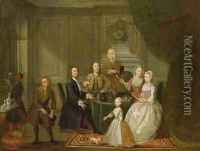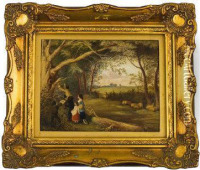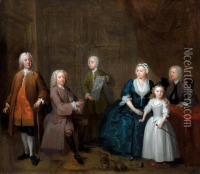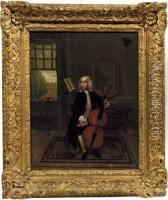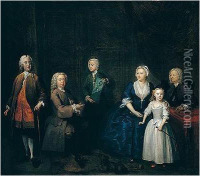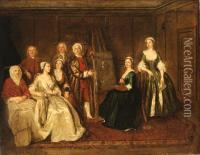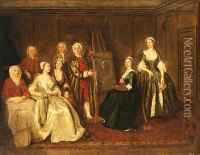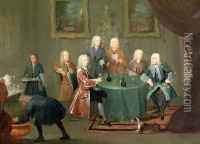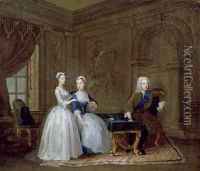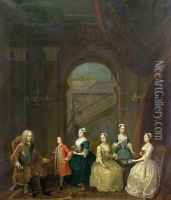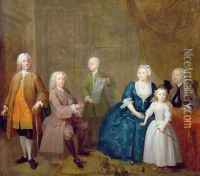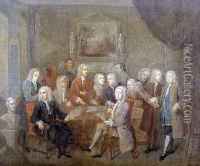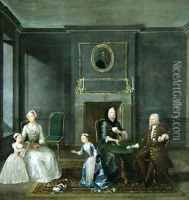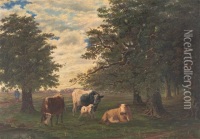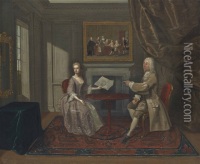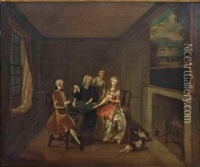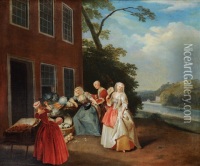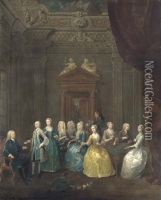Gawen Hamilton Paintings
Gawen Hamilton was a Scottish-born painter who made a significant mark in the early 18th century, primarily in London. Hamilton's life, from his birth in 1698 to his death in 1737, encapsulates the vibrancy and evolving nature of the British art scene during his time. Though specific details about his early life and education are scarce, it is known that Hamilton moved to London, where he quickly immersed himself in the artistic community and began to establish his reputation.
Hamilton's work predominantly focused on portraiture and genre scenes. He was particularly noted for his group portraits, a genre that he managed to imbue with a sense of intimacy and narrative depth. One of his most famous works is 'The Du Cane and Boehm Family Group,' which showcases his ability to capture complex family dynamics and individual personalities within a single canvas. His portraits are characterized by their detailed treatment of faces and clothing, as well as the use of light to highlight the emotional and psychological nuances of his subjects.
Despite his considerable talent and contributions to the British art scene, Gawen Hamilton did not achieve the lasting fame of some of his contemporaries like William Hogarth. However, he was a significant figure among the artistic circles of his time, and his works were appreciated for their craftsmanship and insight. Hamilton's genre scenes, in particular, offer a window into the social customs and daily life of 18th-century Britain, making them valuable not only for their artistic merit but also for their historical significance.
Hamilton's career was relatively short-lived, as he died at the age of 39 in 1737. The cause of his early death is not well-documented, leaving a sense of mystery around the end of his life. Despite the brevity of his career, Hamilton's work had a lasting impact on the development of British portraiture and genre painting. Today, his paintings can be found in various art collections and museums, where they continue to be studied and admired for their contribution to the rich tapestry of 18th-century British art.
